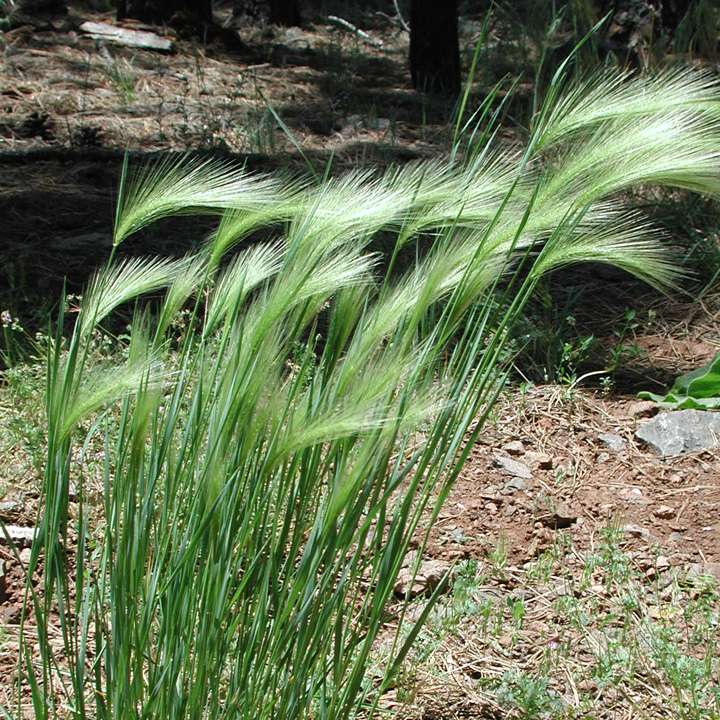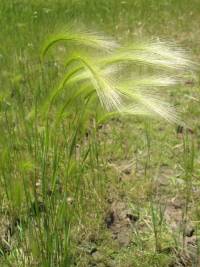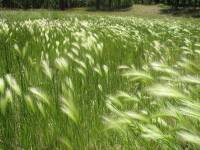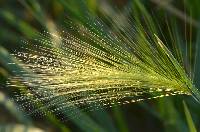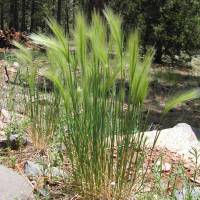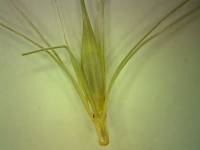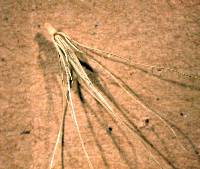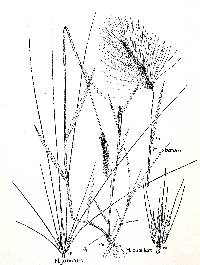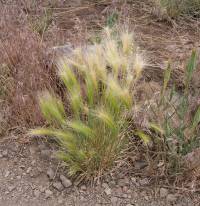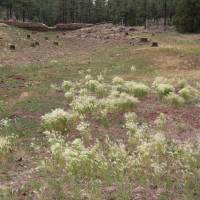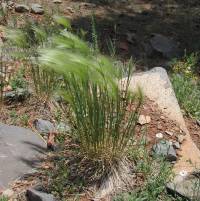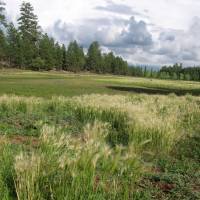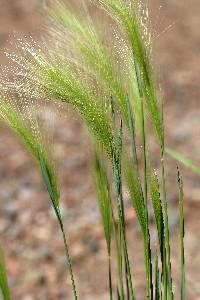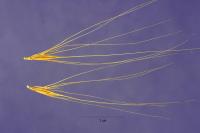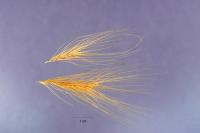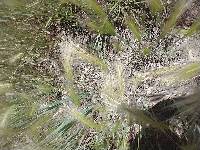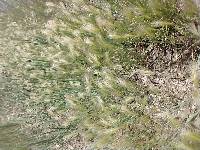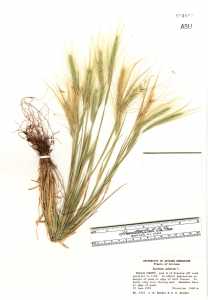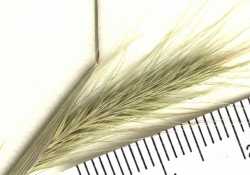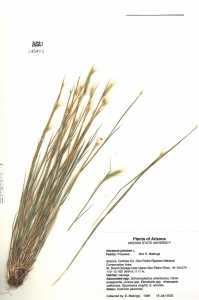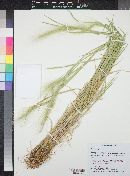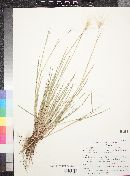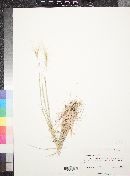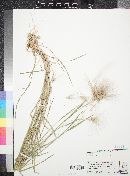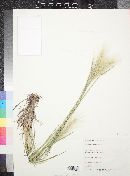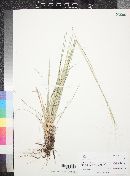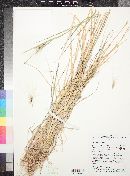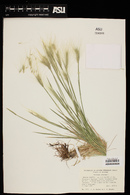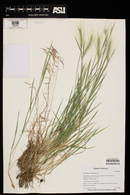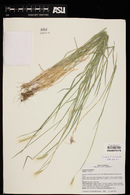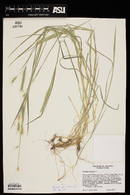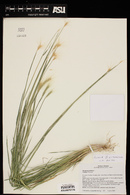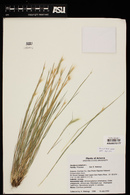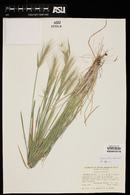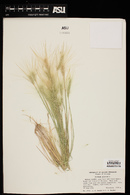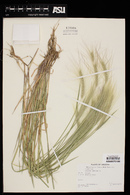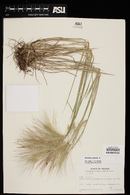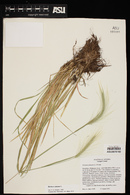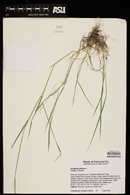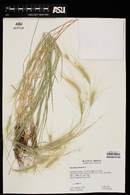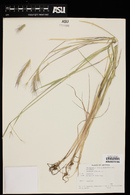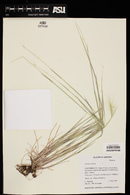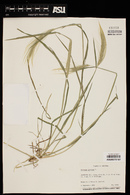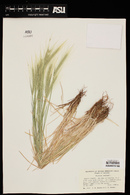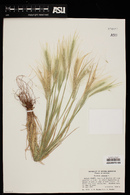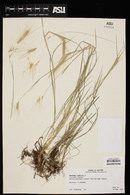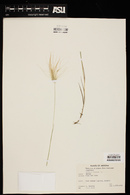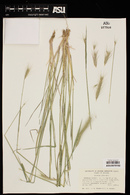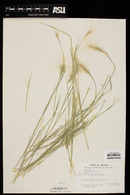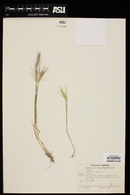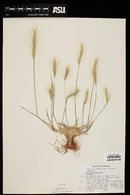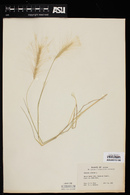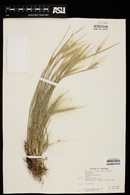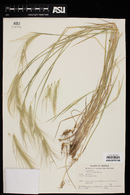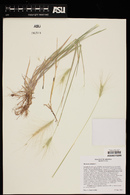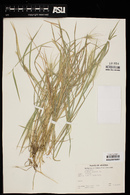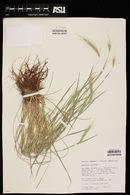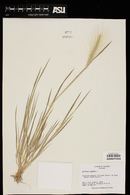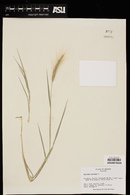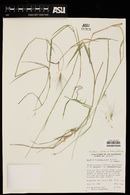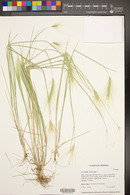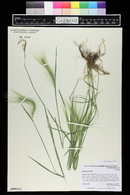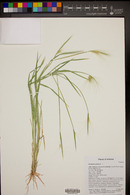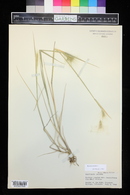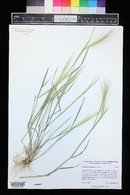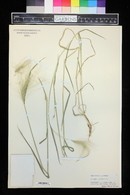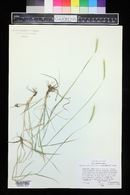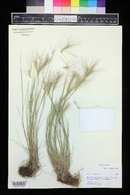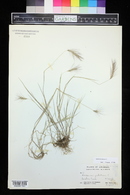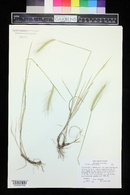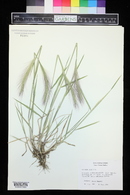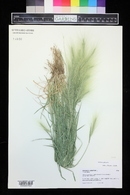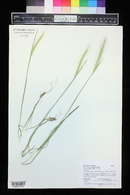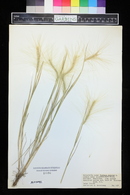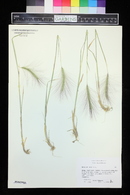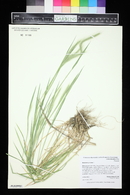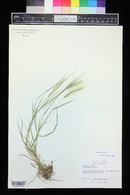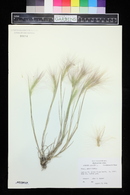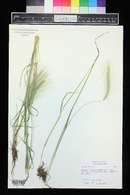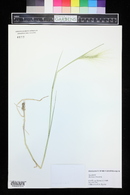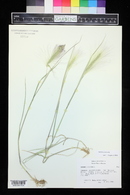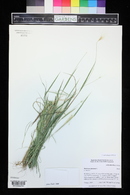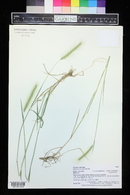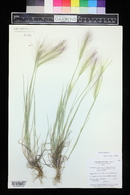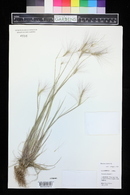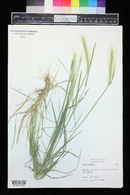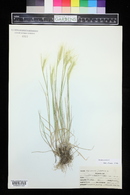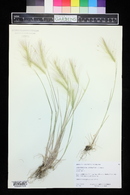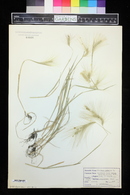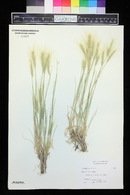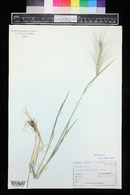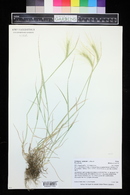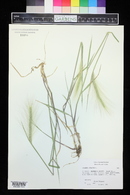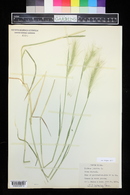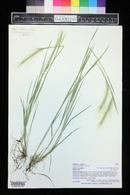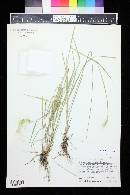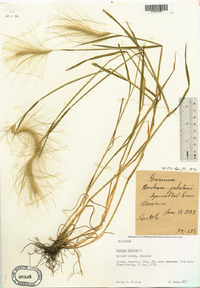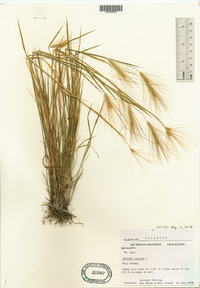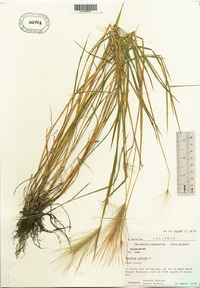Hordeum jubatum
|
|
|
|
Family: Poaceae
Fox-Tail Barley, more...foxtail barley
[Elymus jubatus (L.) Link, moreHordeum adscendens H. B. K., Hordeum jubatum var. jubatum , Hordeum jubatum var. pampeanum Hauman, Hordeum jubatum var. tomentellum Nevski, Hordeum pampeanum (Hauman) Herter, Hordeum pubiflorum var. pampeanum (Hauman) Melderis] |
Plants perennial, sometimes appearing annual; cespitose. Culms 20-80 cm, geniculate to straight, not bulbous based; nodes glabrous. Sheaths glab-rous or pubescent; ligules to 0.8 mm; auricles absent; blades to 15 cm long, to 5 mm wide, scabrous, sometimes hairy. Spikes 3-15 cm, usually nodding, whitish green to light purplish. Glumes 15-85 mm long, conspicuous, bent, divergent to strongly divergent at maturity. Central spikelets: glumes (15)35-85 mm, setaceous throughout, strongly spreading at maturity; lemmas 4-8.5 mm, glabrous, awned, awns 11-90 mm, straight to ascending; paleas 5.5-8 mm; anthers 0.6-1.2 mm. Lateral spikelets staminate or sterile; glumes 17-83 mm, setaceous; lemmas 4-6.5 mm, awned; awns 2-15 mm, divergent; anthers 1-1.5 mm. 2n = 28. Hordeum jubatum grows in meadows and prairies around riverbeds and seasonal lakes, often in saline habitats, and along roadsides and in other disturbed sites. It is native from eastern Siberia through most of North America to Mexico, growing at elevations of 0-3000 m. It has been introduced to South America, Europe, and central Asia. It is grown in Russia and other areas outside its native range as an ornamental. In its native range, it is a weedy species. Hordeum jubatum shows a wide range of variation in almost all characters; most such variation is not taxonomically significant. Hordeum jubatum subsp. intermedium is considered to be a subspecies of H. jubatum because no clear-cut discontinuities exist in the characters used to distinguish it from H. jubatum subsp. jubatum. These plants are fertile. FNA 2007, Gould 1980 Common Name: foxtail barley Duration: Perennial Nativity: Native Lifeform: Graminoid General: Tufted perennial grass that sometimes appears to be an annual; stems 20-80 cm, geniculate to straight, with glabrous node. Vegetative: Sheaths open, glabrous or pubescent; blades flat, to 15 cm long, 5 mm or less wide, scabrous or sometimes hairy; ligules to 1 mm, membranous, entire to ciliolate. Inflorescence: Dense spike, usually nodding or weak and curving, 3-15 cm, light green to light purplish, conspicuously bristly with long, slender spreading awns; 3 spikelets at each node, with 1 floret per spikelet; glumes, conspicuous, awnlike, bent, divergent at maturity; central spikelets with setaceous glumes 35-85 mm, lemmas 4-9 mm with awns 1-9 cm, straight to ascending; lateral spikelets strongly reduced, staminate or represented by the setaceous glumes and rachilla only. Ecology: Found in moist soil in meadows, along streams, or lakes, often in saline habitats or in disturbed sites; elevation range in the southwest is 5,000-10,000 ft (1524-3048 m); flowers June-August. Distribution: Throughout N. Amer., MEX, C. and S. America and Europe, Asia and S. Africa. It is considered to be native to N. Amer and e. Siberia, and introduced elsewhere. Notes: Distinguished by being a perennial grass with a dense inflorescence with many long awns. May be confused with the similar appearing Elymus elymoides; H. jubatum is distinguished by its lack of auricles at the base of the leaf blades (E. elymoides has distinct auricles); its thick, dense spike with 3 spikelets per inflorescence node, with the inflorescence breaking apart into pieces between the spikelets (in E. elymoides the spikelets fall off and a naked central stalk remains); distinguish from other species of Hordeum based on its many dense, long, divergent awns to 10 cm long (other Hordeum spp have shorter awns). This is a weedy grass of riparian and disturbed habitats. Ethnobotany: Used as an eye medicine; seeds were ground and eaten. Etymology: Hordeum is the Latin name for barley; jubatum means crested, referring to the long awns. Synonyms: None Editor: SBuckley 2010, FSCoburn 2015, AHazelton 2015 Tufted perennial (sometimes fl the first year) 3-7 dm, glabrous to densely soft-hairy; lvs flat to involute, 1.5-4(-5) mm wide; auricles wanting or less than 0.5 mm; spikes 4-10 cm (excl. awns), nodding, commonly purpurescent, often appearing as a mass of upwardly scabrous awns; central spikelet of a triad sessile, the lateral on curved pedicels 0.7-1.2 mm, their florets reduced, borne on rachilla-joints ca 0.7 mm; glumes long and awn-like, 2.5-6(-15) cm; fertile lemma 5.5-8 mm, faintly 5-veined, tapering into an awn 1-6 cm; anthers 1-1.5 mm; 2n=14, 28, 42. A weed along roadsides, and often becoming abundant in fields and moist or wet meadows; Nf. to Alas., s. to Del., Ill., Mo., Tex., and Calif. Hybridizes with several spp. of Elymus, q.v. Gleason, Henry A. & Cronquist, Arthur J. 1991. Manual of vascular plants of northeastern United States and adjacent Canada. lxxv + 910 pp. ©The New York Botanical Garden. All rights reserved. Used by permission. From Flora of Indiana (1940) by Charles C. Deam This species has become well established in the northern half of the state, especially in the lake area where it has already become a veritable pest. It is found mostly along roadsides and railroads and in waste places, fallow fields, and pastures. It is extremely doubtful that this species is a native of Indiana. Hansen (Proc. Indiana Acad. Sci. 37: 320. 1928) reported [Hordeum nodosum (= H. brachyantherum)] from Vanderburgh County. He sent me a specimen to have his determination verified. Hansen says: "Found growing abundantly in Vanderburgh County during July." I do not have any data except the county locality, so I have not been able to visit the place to ascertain whether it persists or is spreading. I am including this species in our flora upon his authority. Since this is a western species, it has been introduced here and should be so regarded. [Since no subsequent collections have been made, this species does not appear to have established itself in Indiana.] ...... Indiana Coefficient of Conservatism: C = null, non-native Wetland Indicator Status: FACW Indiana populations belong to subsp. jubatum. Deam (1929): The stiff sharp parts of the spike enter the mouths and nostrils of grazing animals causing inflammation and ulceration. Cases are on record where the gums become diseased and the teeth fall out. Land owners should be on the alert and exterminate this grass before it becomes well established. This will require the cooperation of highway and city officials, the mowing of the right of way of railroads, and the vigilance of those in care of public land. |
|
|
|

